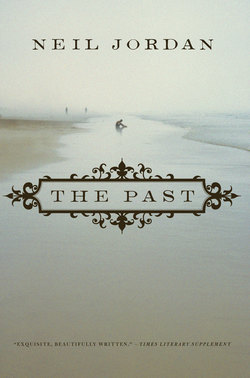Читать книгу The Past - Neil Jordan - Страница 7
На сайте Литреса книга снята с продажи.
Оглавление1
TWO POSTCARDS OF the holiday town in the south-west of England. They show the same scene which makes me think they were chosen thoughtlessly, bought together maybe in the same shop without caring a whit what the picture showed. Or bought separately, two months between them. She had forgotten, of course, what the first one displayed by the time she came round to needing the second. Both are yellow and with serrated edges, yellowest at the edges as if singed by a match. But the flame is time and the smell, far from the smell of burning, is the smell of years.
THEY DON’T SHOW the sea or the town, just the esplanade. But from the look of it, even across years, one can’t doubt that this row of dowdy four-storey houses faced the sea. And from the look of them too one can surmise a town behind this esplanade that lives off this esplanade and all year waits for the time when the canvas awnings are stretched out and the canvas deckchairs are placed in the front porches. For the houses are obviously hotels and the angular porches are so obviously looking at what in the brochures must have been a sparkling blue sea, one can be sure that the esplanade was wide and elegantly paved, that there were railings on which to lean and maybe even white iron chairs on which to sit and watch that sea, perpetually blue and be cooled by its salt breezes. And there were rows of primitive paddle-boats (they had them then?) rocking, listing on the edge of the tide, and along the strand itself a row of canvas bathing huts. Canvas! Yards and yards of it are implied, painted in those circus stripes, those warm blues, fawns and yellows, stretched over windbreakers, tautened umbrellas and Punch and Judy stands and even barrel-organs. Was it the age of canvas? For the esplanade is full, there must have been attractions galore with which to fill it—and a spa too, behind the town, backed on by the houses, with the heavy lead taps and the metal baths. Was it the age of spas? For of the people who fill the esplanade, immobile and thronging, the women are most obvious, carrying sun-umbrellas. Was there devotion to water, a suspicion of sunlight? In the postcards they look like white, straight brushstrokes, their umbrellas like brighter dabs. And behind each woman, in her shadow almost, is always the predatory form of a man. They arouse my jealousy these men, suspicious themselves of sunlight, at times each man could be each woman’s shadow, so much in her shadow he is. But then the whole image is drenched in sunlight as if the shot had been over-exposed or the card bleached by its years on some green felt desk near a window, through which the sun shone. But despite the bleaching of years, the blaze of sunlight could only have come from the day itself, a hot ‘salad’ day, and there were more of them then for the handwritten date on the back is June the First 1914. The message scrawled underneath is peremptory, almost irrelevant. Back in two weeks, Una. This though she knew, she must have known, her stay would last more than seven months. Which brings us to the main fact the card can speak of, besides sunlight and years—that she was a compulsive liar. The second card bears the same scene, the women still encased in sunlight though the sky must have leadened in those seven months since season, even then, must have followed season. And the message too promises a two-week return. But the signature is different—Una, Michael, Rene—and behind that last name there is a coy mark of exclamation (!). Which brings us to the prime fact that this card proclaims—the birth of her child. And one third fact, perhaps subsidiary, proclaimed by the months that intervened—between the first card and the second the Archduke Ferdinand was shot in Sarajevo.
